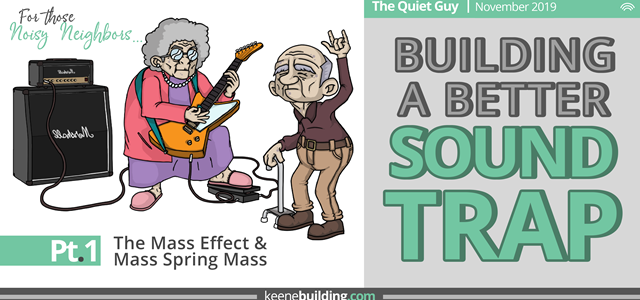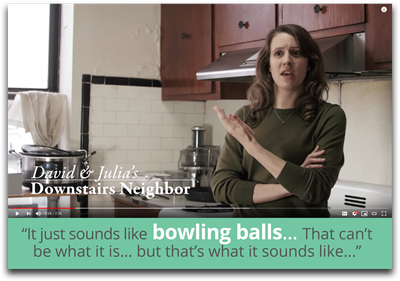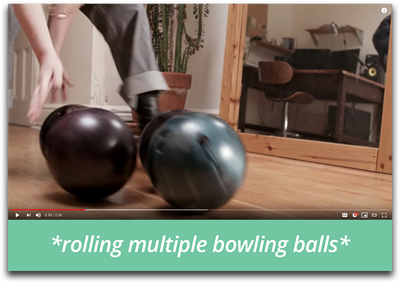
Pt. 1 – The Mass Law & Mass Spring Mass
Understanding how to better attenuate sound in multi-family buildings can go a long way towards repeat renters. Paying close attention to details is critical to the success of creating a quiet environment.
Typically, the more rigid an assembly, the more it will transfer sound to the adjacent space. In addition, the more direct connections of one construction material to the next, the less effective your floor ceiling assembly will be at stopping the transfer of sound, be it impact or airborne.
Low frequency sound (footfall), the biggest complaint in multi-family, is the most difficult to control. These types of sound move more easily through lighter materials. On the contrary, high frequency sounds (child’s voice, etc.) move more easily through heavier materials.


*Stills from the video "Everyone's Upstairs Neighbors,"
originally uploaded by the YouTube channel Above Average
Considerations in Multi-Family Construction:
The Mass Law:
The denser the assembly the more airborne sound that can be attenuated. Think 8 inches of concrete vs. 4 inches of concrete; What will stop more airborne sound? So, the heavier the construction the better for airborne sound, but not necessarily for impact sound.
Mass Spring Mass:
Wood frame construction uses lighter materials, so it is important to create separations in the different mass parts of the system. Separating the finished flooring materials from the subfloor is a huge consideration. In order to do this, most architects specify the use of a lightweight gypsum concrete to add mass while creating a smooth flat surface for floor coverings. Using softer materials, or even creating air space below the gypsum by virtue of a resilient sound mat, is highly preferred. Adding even more lighter-density material in that air space like Keene Building Products Quiet Qurl® MT with a muffling pad below can greatly increase that effectiveness. This not only insulates from the impact sound but decreases the pressure build-up from impact noise.
Available December 2019:
"Pt. 2 - Creating Resilient Channels"